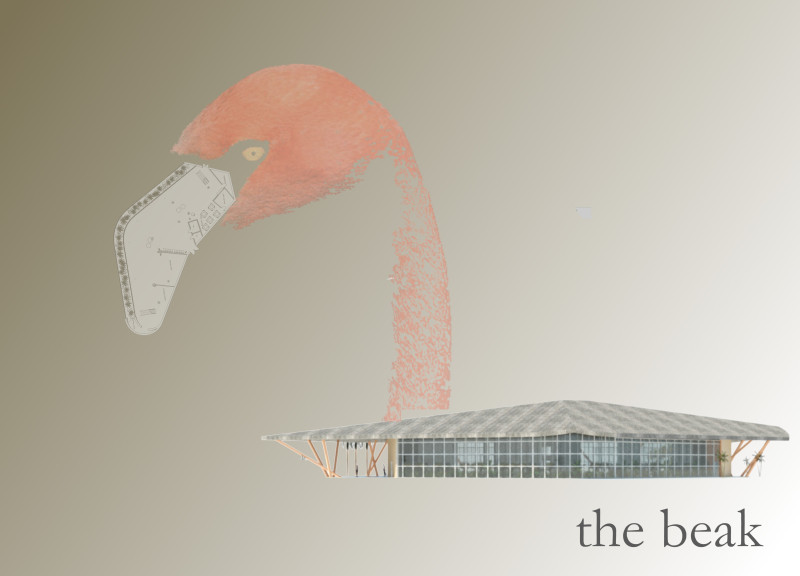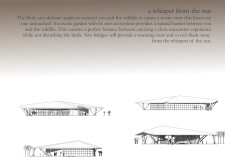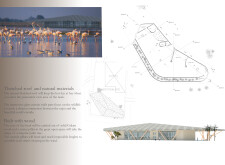5 key facts about this project
The Beak is designed to focus on engaging visitors with wildlife in an interactive environment. Set within a carefully planned landscape, the structure functions as both an exhibition area and a space for people to experience nature. The concept revolves around fostering a connection between the visitors and the surrounding wildlife, allowing for close encounters while maintaining ecological balance.
Structural Form and Angles
Delicate angles in the architectural form enhance the connection with the surrounding wildlife. These thoughtfully designed features create framed views that invite curiosity and exploration from those who enter. The layout encourages a smooth transition between indoor and outdoor spaces, highlighting the close relationship with the natural landscape.
Garden as Ecosystem
An exotic garden plays a vital role in the design, functioning as an independent ecosystem. This garden acts as a natural barrier, allowing visitors to engage with wildlife without causing disturbances. Two bridges are placed strategically to provide shaded areas, offering comfort while enabling guests to enjoy the beauty of the ecological surroundings.
Material Transparency
A natural thatched roof is essential for managing thermal comfort in the building. This design choice helps keep areas cool during warmer days, improving the visitor experience in spaces that provide panoramic views. Impressive glass curtain walls increase visibility, allowing natural light to enter while framing views of the outside environment and its wildlife.
Unique Structural Elements
Solid Gulam wood forms the core of the structure, delivering stability and a sense of warmth. A center pillar takes the shape of a palm tree, reflecting the organic theme throughout the design. The exterior pillars bend to resemble reed straws swaying in the wind, demonstrating an innovative approach to construction that aligns with the natural elements present.
The careful integration of these features results in architecture that reflects and respects its ecological context. The Beak emerges as a place where visitors can connect meaningfully with the environment around them, encouraging an appreciation of nature in all its forms.






















































